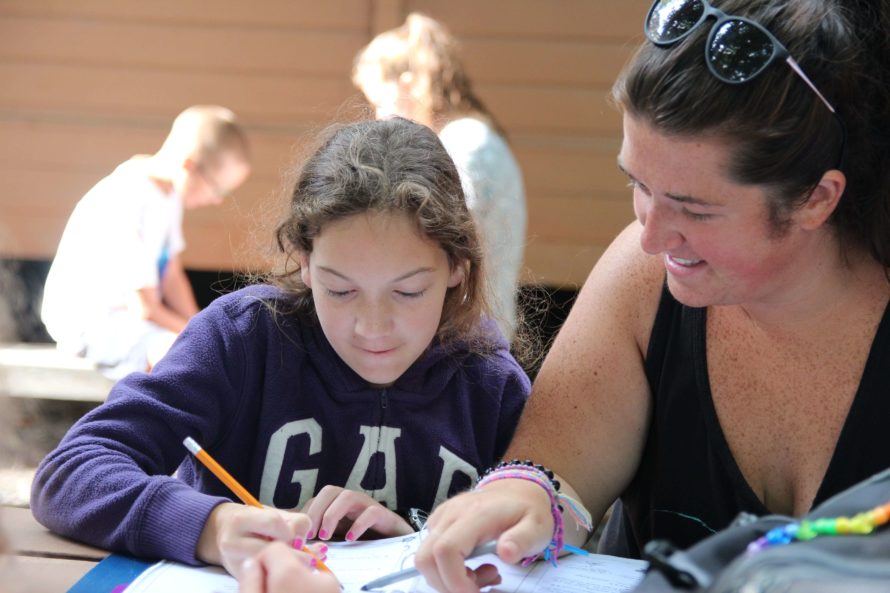I am a special education resource teacher in an elementary school near Toronto. In talking to the grade 3-6 teachers that I support, there was consensus about one thing: their students were weak at writing, and they didn’t know how to fix it. So, when I was at the International Dyslexia Association conference, I decided to explore what experts were saying about writing.
The first workshop I attended was called Paper to Pencil: Rationale to Research, which focused on the research and teachings of Bev Wolf from the Slingerland Institute for Literacy. The presenter focused on lessons from research and cited the importance of direct, multi-sensory teaching of handwriting, both printing and cursive, in the development of confident and effective readers and writers. Introduction to and mastery of printing produces better results in early reading because the letters are similar to those students would see in their readers, in storybooks, and even in their parents’ and teachers’ writing. That made sense to me. What I
heard next surprised me: children who learn cursive writing score higher on assessment of spelling and composition in grade 7.
The other writing workshops I attended—one presented by William Van Cleave and another by Lucy Hart-Paulson—echoed the same messages. They talked a lot about the connection between a person’s finger movements and the specific written words they produce (the “orthographic loop”). If an entire written word (how it looks, how to create the correct letters, and how to spell the word accurately) is stored in your memory as one unit, it vastly increases the efficiency and accuracy of your writing. If, on the other hand, each step of writing (holding the pencil, forming the letter, spelling, etc.) requires conscious thought and/or processing, then the physical act of writing becomes a drain on working memory resources. Since working memory is limited, if these resources are used up on these lower levels of writing, they are not available for the more sophisticated writing processes such as keeping specific vocabulary in mind, constructing an argument, and organizing ideas.
Functional MRI studies have shown that typing does not cause the same parts of the brain to light up, which means it does not have the same role in the orthographic loop or have the same impact on learning spelling or improving composition, at least not until the writer is both a very fluent typist (something that is also no longer emphasized in many schools) and considerably older. No mention was made of assistive technology such as voice-to-text features.
I came home from the conference talking to all of my colleagues about handwriting instruction, and I have started direct teaching of handwriting with one of my grade 5 writing groups, following the 4-step process outlined in the workshops.
- Sky writing: Engage your large arm muscles by pretending to write the letter in the air, saying the name of the letter each time.
- Trace: Trace an example of the letter, following the correct formation, first with the fingertip, then with the butt of the pencil, and finally with the graphite end. Start with larger letters and gradually decrease in size until the student can use traditional lined paper (or slightly larger for very young kids).
- Copy: Copy teacher examples underneath so they can look at the example while writing. Again, work from larger to smaller and insist on proper formation.
- Cover: Cover up the model and have the student write the letter several times from memory. Keep saying the letter as you are writing it. One caution, though, is not to have students use cursive for composition until they have mastered the formation of the letters and developed a level of fluency and automaticity.
A quick word about writing fluency: by grade 3, students should be able to write the entire alphabet in order in under 60 seconds. By adulthood, people should be able to do it in half the time. A few minutes of practice each day can pretty quickly speed up their fluency for writing the alphabet (lower case, upper case, and eventually both in cursive), which should translate into increased fluency with writing in general. In addition to quick practice of letter formation, this alphabet exercise helps students develop familiarity with the order of letters, which can also be addressed through games or ‘letter hunts’ (e.g., Which letter comes right after “r”? Which letter comes right before “g”?).
As a teacher, parents often ask what they can be doing at home to help with their child’s literacy development. Reading together is, of course, a good answer. But this research also suggests handwriting practice. Until and unless jurisdictions add printing and handwriting into the elementary curriculum, most teachers will not focus on these skills because they simply don’t have time. Luckily, with a few minutes a day and downloadable resources or books bought from Amazon or Chapters, parents can easily fill this gap in their children’s learning. If your child is struggling in writing, it might just be worth a try.

